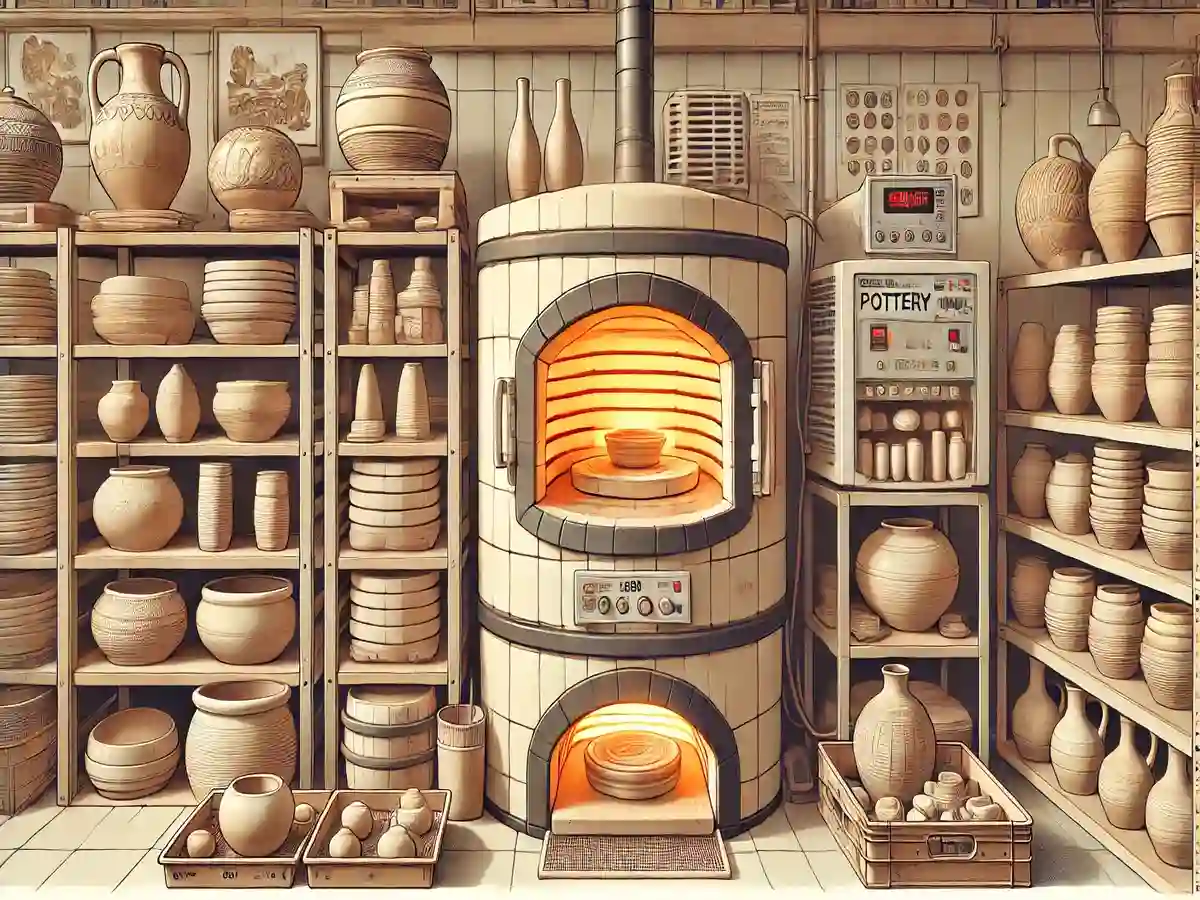The core of ceramic art is pottery kilns, which turn raw clay into exquisite, long-lasting pieces of art. Understanding the various types of kilns and their uses is key for all potters, regardless of experience level. This page explores several kilns, with an emphasis on their special qualities and advantages, thereby guiding your choice for your ceramic requirements.
Ceramic Kiln: Pottery’s Foundation
In the realm of pottery, ceramic kilns are indispensable since they offer the high temperatures required for firing clay. Low-fire clays and mid-to-high-fire stoneware will find these kilns appropriate since they are made to attain temperatures up to 2250℉. Ceramic kilns are adaptable, allowing artists to try various clay bodies and glazes. This versatility leads to a range of textures and finishes. Most ceramic kilns now feature electric controls that offer precise temperature control and user-friendly operation due to advancements in technology.
Small Kiln: Compact and Powerful
Small kilns provide a practical and space-saving option for hobbyists and small-scale potters, offering the necessary heat to fire small batches of pottery. These little kilns are perfect for limited areas since they are compact and yet provide the required heat to fire small batches of pottery. Small kilns, considering their scale, seldom compromise performance. Available in both electric and gas-powered variants, they satisfy a range of tastes and requirements. Those who want to discover pottery without making a bigger, more costly investment often choose its portability and efficiency.
Classic Method: Pottery Oven
Many times, the word “pottery oven” describes historic, traditional kilns. Usually wood-fired, these ovens required meticulous monitoring of the temperature to ensure accuracy. Although contemporary kilns have mostly supplanted these conventional ovens, some potters still enjoy the special results that wood firing generates. The erratic character of wood-fired pottery ovens can produce unique textures and colors. This accentuates the rustic appeal of the final works.
Home Kiln: Taking Pottery Into Your Living Area
Home kilns have transformed the way pottery is done by letting enthusiasts make works of art right in their houses. These kilns are designed to prioritize safety and ease of use for domestic settings. From tabletop versions to bigger units, they exist in a range of sizes to suit varying degrees of production. Usually electric, home kilns provide a quick and easy-to-manage, clean, and efficient firing mechanism. Potters can enjoy the ease of creating and firing their work without a separate studio space by means of a home kiln.
Modern and Dependable Electric Kilns for Pottery
The simplicity and dependability of electric kilns have made them the preferred option for many modern ceramists. These easily run kilns with programmed settings that provide you exact control over the firing process. Because they emit less than conventional wood or gas-fired kilns, electric kilns are also ecologically benign. Novice and professional potters alike will appreciate the accessibility of electric kilns due to their low maintenance requirements and cost-effectiveness. Electric kilns are advancing with technology, now featuring digital displays, remote monitoring, and other modern conveniences.
Clay Kiln: The Tool Ceramic Artists Really Need
Any ceramic artist needs a clay kiln since it provides the heat required to turn unprocessed clay into completed pottery. Each kiln is designed for specific clay types and firing techniques. This ensures optimal results for different artistic approaches. From earthenware to porcelain, a clay kiln can hold a great variety of materials, thereby enabling artists to investigate several techniques and styles. It is crucial for artists to select a kiln that matches their technical requirements and creative vision because it can significantly affect the final outcome of the pottery.
Summary: Selecting the Correct Kiln for Your Pottery Trip
Any potter must make a vital choice about the kiln that will affect not only the creative process but also the quality of the produced works. Whether your preferred kiln is ceramic, tiny, or electric, knowing the special qualities and advantages of each kind will help you to decide which one to use. To choose the kiln that best fits your needs when you start your ceramic path, take into account your space, budget, and artistic objectives. The creative and expressive possibilities in pottery are truly limitless when paired with the right kiln.

